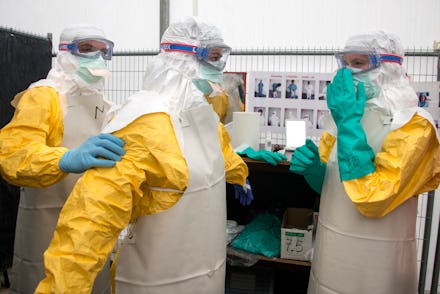How Ebola Compares to Other Infectious Diseases, in One Chart

The news: Ebola is an extremely serious virus, but there's been a lot of information and misinformation in recent months about how the disease spreads. So how do its infectiousness and deadliness really compare to other diseases?
Information is Beautiful's David McCandless' insightful new infographic provides a bird's-eye view of diseases and infections that have made headlines in recent years, from swine and avian flu to HIV and Middle East respiratory syndrome.
And while Ebola is not quite as infectious as malaria or even chicken pox, it is one of the deadliest diseases that made it onto the graph, sitting at third place behind rabies and HIV.
Check out the graph below:
What does this mean? While Ebola is indeed a deadly disease, it's not nearly as contagious as many Americans might image. But while the chance of full-blown Ebola epidemic in the U.S. remains very low thanks to our advanced (if flawed) public health infrastructure, the spiraling situation in West Africa illustrates how dangerous the virus can be if left unchecked..
On Tuesday, the World Health Organization estimated that the Ebola mortality rate has jumped to 70% and that if the situation is not brought under control, we might see as many as 10,000 new cases per week within the next two months.
Many diseases on the chart are entirely avoidable. While mumps, measles and whooping cough may not be as deadly as Ebola, they do pose a threat to the young, the elderly and those with compromised immune systems. And though they may be the most infectious diseases on this infographic, they are among the most preventable thanks to incredibly effective vaccines, so it might be a good idea to "vaccinate now!" as the graph suggests.
You can read McCandless's data in spreadsheet form here.